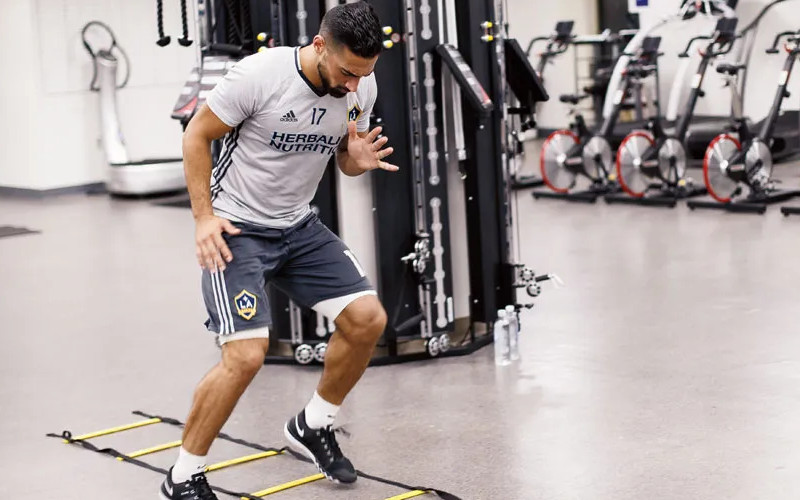Coaching in Major League Soccer (MLS) comes with its own set of challenges and dynamics that differentiate it from top leagues around the world. The league’s complex rules, salary restrictions, grueling travel, and a uniquely North American soccer culture shape a one-of-a-kind environment for managers. This article explores what sets MLS coaching apart and how bosses must adapt to thrive.
Restrictive Player Acquisition Rules
One major restriction MLS coaches face is navigating the league’s strict roster and acquisition regulations that aim to maintain cost control and competitive balance.
Unlike European clubs that can buy players at will, MLS teams must operate under a salary cap and complex acquisition mechanisms:
- The Designated Player (DP) rule allows teams to sign up to 3 players exempt from salary cap restrictions. This enables DPs like Carlos Vela and Josef Martinez on multi-million dollar contracts.
- MLS utilizes a player draft, discovery signings, lotteries, and other obscure mechanisms unfamiliar to foreign managers.
- Domestic player quotas require 18 of a team’s 20 roster spots to be filled by North Americans.
- Complex contract and personnel rules like guaranteed contracts, retention funds, and allocation money add to the labyrinthine nature of squad building.
The resulting complex puzzle means MLS coaches must master the league’s convoluted mechanisms to construct competitive squads. It requires innovative thinking compared to the free flow of talent abroad.
Salary Cap Constraints
The restrictive MLS salary cap presents another barrier coaches must overcome. Unlike legendary managers like Pep Guardiola who enjoy virtually unlimited budgets at Europe’s super clubs, MLS bosses operate on a tight budget.
- The 2022 MLS salary cap is just $4.9 million with only 3 players exempt. This is dwarfed by EPL and La Liga.
- Teams must cleverly utilize allocation money, make trades, and unearth bargain players to find value.
- The limited budget means most MLS players make modest salaries. Coaches must motivate players without huge financial incentives.
- The salary cap often forces coaches to rebuild squads year-to-year as players leave for better-paying foreign clubs. Continuity is hard.
The realities of the MLS salary cap shape how managers operate tactically and motivate players compared to other leagues worldwide.
Grueling Travel from Coast to Coast
Another distinctive challenge is the grueling travel across huge distances MLS teams must endure. Major League Soccer spans North America with clubs from Los Angeles to Miami.
- Teams can routinely face 6+ hour flights between conferences as they criss-cross time zones.
- Teams often take multiple flights and train in different cities across a week during road trips.
- Studies show MLS players travel nearly 3 times farther than counterparts in top European leagues.
- Fixture congestion is intensified by competition in multiple domestic cup tournaments.
This travel burden contributes to MLS having more drawn, low-scoring games – tired bodies influence performances. Coaches must carefully manage squads and rotation for road trips foreign bosses never experience.
Managing Debt and Expectations
Unlike storied clubs in Europe, most MLS teams are less than 30 years old and do not enjoy generations of history and support. They operate more like start-up franchises building fanbases and infrastructure.
- Many MLS clubs carry considerable debt from recent expansion fees and stadium projects.
- Teams are under pressure from investors to deliver on-field success quickly to grow their brand.
- Marketing and commercial objectives sometimes supersede strictly soccer goals for team executives.
MLS coaches must deliver results now for ownership while building sustainably for the future – a difficult balancing act. The stakes and job security differ from coaches abroad.
American Soccer Culture
Perhaps the most unique aspect of MLS coaching is navigating America’s distinctive soccer culture compared to the sport’s global heartlands.
- Soccer competes with several larger homegrown sports like NFL and NBA that dominate the US mainstream.
- American sports franchise models involving owners, drafts, and salary caps shape MLS differently than traditional global leagues.
- College soccer and pay-to-play youth systems form a much smaller talent pool to draw from domestically.
- The large Latino population creates a rich but complex soccer culture for MLS teams to tap into in their markets.
These underlying cultural factors impact everything from community engagement to squad building to how teams market themselves. MLS coaches must understand this North American context intimately compared to foreign leagues.
Conclusion
While salt-of-the-earth values like hard work, leadership, tactics, and motivation remain essential, the MLS landscape shapes coaching uniquely. The league’s dizzying rules, limited budgets, grueling travel, debt pressures, and North American soccer culture demand managers adapt if they are to achieve success.
The complex job of coaching in Major League Soccer has chewed up and spit out many foreign managers who could not adjust. Those who thrive show the flexibility and nouse to master MLS nuances while achieving results and entertaining fans. They understand the role coaches play in the growth of the sport locally.
There is no cookie-cutter formula – coaches must assess their club’s philosophy, objectives, and resources when tailoring an approach. But understanding what differentiates MLS is vital. The league’s constraints can foster innovation and vision if handled astutely. In the end, coaching comes down to making the most of the hand you’re dealt.




